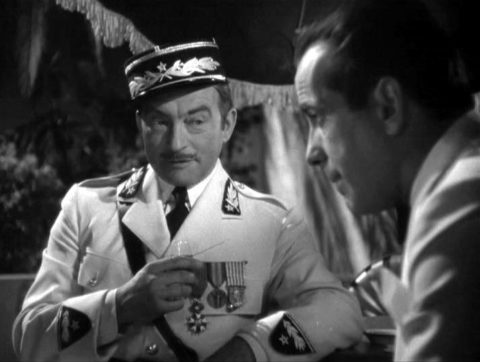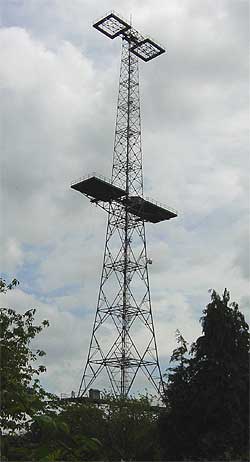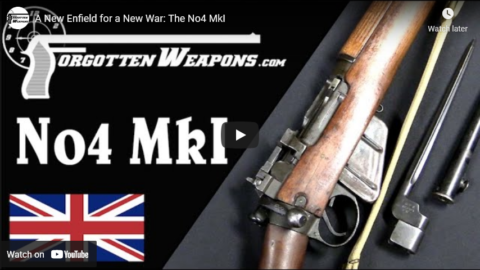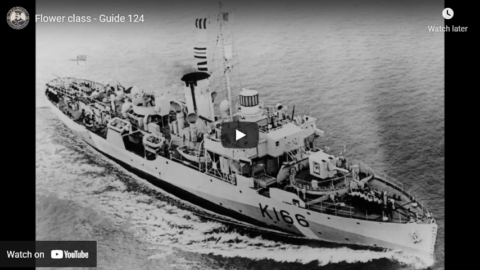PauliosVids
Published 20 Nov 2018A look at the work of a bomb disposal squad.
November 8, 2021
Look at Life — Rendered Safe (1962)
November 7, 2021
The Allies Break Through! – WW2 – 167 – November 6, 1942
World War Two
Published 6 Nov 2021After all these months of fighting, the British 8th Army breaks through Erwin Rommel’s Axis positions in North Africa, but the Allies have even bigger plans for that theater of war — a huge invasion of Vichy French North Africa to take place next week. The Soviets also have a plan for a huge invasion to take place very soon near Stalingrad, though the fighting in the city itself sees a lull the second half of this week.
(more…)
November 6, 2021
Is the Answer in Uranus? – The Soviet Plan to Win at Stalingrad – WW2 SPECIAL
World War Two
Published 4 Nov 2021Georgy Zhukov told Josef Stain in September that if the Red Army could just hold out until November, he could put together a counteroffensive that would defeat the enemy. Well, November is here, and that counteroffensive is ready to kick off, but how was it put together? Let’s find out.
(more…)
November 5, 2021
A United Front Against Nazi Atrocities – WAH 045 – October 1942, Pt. 2
World War Two
Published 4 Nov 2021As the war intensifies on all fronts, the occupied world is aflame with resistance and reprisals. From Paris to Papua New Guinea, Humanity is under attack — but it is also fighting back.
(more…)
November 4, 2021
Anti-Tank Chats #2 | Panzerbüchse 39 | The Tank Museum
The Tank Museum
Published 2 Jul 2021Welcome to Anti-Tank Chats, a brand-new series on the history of infantry weapons used in Anti-Tank warfare. In the second episode, Archive and Supporting Collections Manager, Stuart Wheeler explores the Panzerbüchse 39 Anti-Tank Rifle.
Support the work of The Tank Museum on Patreon: ► https://www.patreon.com/tankmuseum
Visit The Tank Museum SHOP & become a Friend: ► tankmuseumshop.orgTwitter: ► https://twitter.com/TankMuseum
Instagram: ► https://www.instagram.com/tankmuseum/
#tankmuseum #tanks
November 3, 2021
Casablanca had a small but significant historical error
And it’s not Captain Renault’s throwaway line about the Americans marching into Berlin (which, of course, did not happen in 1918). The error that Michael Curtis points out is very easy to miss:

Still from Casablanca (1942), with Captain Renault (Claude Rains) asking Rick Blaine (Humphrey Bogart) why he came to Casablanca.
As time goes by, there is a consensus that Casablanca, the story of the cynical hard drinking American expatriate night club owner choosing between his love for a woman or helping her and her husband, a resistance hero escape from the town of Casablanca, a complex town controlled by the Vichy state under Nazi occupation, is one of the greatest films of all time. Its characters, dialogue, theme song, have become iconic. We’ll always have Casablanca. It is a film of moral ambiguity, that can be seen either as a theme of love and sacrifice, or as a political allegory about resistance against Nazism.
However, this brilliant film has a flaw. In one scene the camera focuses on the prefecture of the corrupt chief of police on the wall of which is the motto of the French Third Republic, “liberty, equality, fraternity”, inherited from the 1789 French revolution. But the Third Republic had been ended in May 1940, and its motto had been officially replaced by the slogan, “work, family, homeland”, of the new French State, popularly known as Vichy. The differences between the two mottos are still pertinent in French politics and culture today.
Some political and cultural problems are easy to solve, even if costly. Scotland recently spent seven months of research and $162,000 to create a new slogan that would increase tourism. It finally came up with a banal slogan, “Welcome to Scotland”. There is no easy solution for France which has been and remains a sharply divided society still confronting its history of the World War II years, the defeat of the French army by the Germans in June 1940, the end of the Third Republic and its replacement by the French State headed by 84 year old Marshall Philippe Petain, regarded as a hero of Verdun in World War I, located in Vichy, a spa in the Auvergne.
The Vichy régime participated in persecution and discrimination of the Jewish population, by aryanisation of property, propaganda, antisemitic ideology, anti-Jewish legislation, roundups, deportation to death and concentration camps. In view of this antisemitic attitude, it is a paradox that after the War, 75% of the Jewish population in France remained alive, the result of complex religious, cultural, and international factors. This can be compared to extermination of 80% of Jews in the Netherlands, and 45% in Belgium.
Nevertheless, 75,721 Jews were deported from France, and fewer than 2,000 survived. Persecution was extensive. Jews were banned from professions, civil service, journalism, business, entertainment, refugee Jews were held in concentration camps under French control, antisemitic legislation affected all Jews, and the tragedy of Vel d’Hiv occurred. French police carried out the first mass arrests of Jews in Paris in May 1941, and the first French deportation train left on March 12, 1942. The most infamous event, the roundup by French gendarmes, using batons and hoses, of 13,000 Jews took place on July 16-17, 1942 when the victims were taken to the Vel d’Hiv indoor bi-cycling stadium in Paris before being deported to Nazi camps. They included 7916 women, 1129 men and 4115 children.
By the so-called National Revolution, France would be rescued from the decadent Third Republic, and returned to purer values. The controversy continues. Was France guilty of contributing to the Holocaust, and who was responsible? First, were collaborators and sympathizers with the Nazis only a minority of the population and was Petain the “shield”, protecting France and the French people as much as it could within the country, while General de Gaulle abroad was the “sword”. A second defense was that Vichy could do little while the Germans occupiers were responsible. A third point is that Vichy tried to protect French national Jews by collaborating in the persecution, the deportation and ultimately extermination of foreign Jews in France.
November 1, 2021
Britain’s Last Ditch: Wartime Changes to No4 Lee Enfield
Forgotten Weapons
Published 14 Jul 2021http://www.patreon.com/ForgottenWeapons
https://www.floatplane.com/channel/Fo…
Cool Forgotten Weapons merch! http://shop.forgottenweapons.com
When we think of “last-ditch” rifles, we normally think of 1945 and the very end of World War Two. For the British, however, the lowest ebb of the war was in 1941 and 42, and it is during that period that the Lee Enfield was at its crudest. British ordnance instituted a number of simplifications to maximize weapons production. In particular:
– Walnut replaced with kiln-dried birch and beech for furniture
– Two-groove barrels replacing five-groove ones
– A vastly simplified 2-position flip sight in place of the original fine micrometer style
– Simplified bolt release, designated the No4 MkI* (which was only produced in the US and Canada)
– Aluminum buttplates
– Much reduced standards of fit and finish, leading to really ugly machine marks and haphazard markings.Most of these changes would be walked back later in the war as Britain’s footing became more solid, but they make a very interesting period of changes for the collector to study.
Contact:
Forgotten Weapons
6281 N. Oracle 36270
Tucson, AZ 85740
October 31, 2021
Nazi General Dies of Heart Attack – WW2 – 166 – October 30, 1942
World War Two
Published 30 Oct 2021The Allies may be on the verge of a breakthrough in North Africa, but they’re losing at sea to the Japanese this week, and the Axis are also advancing in the Caucasus, though the street by street struggle at Stalingrad continues as always.
(more…)
October 30, 2021
Revisiting the Battle of Britain
In The Critic, Phillips O’Brien has a historical hot take on the popular view of the Battle of Britain:

The Chain Home Tower in Great Baddow Chelmsford, a key part of Britain’s air defence network.
Photo by Stuart166axe via Wikimedia Commons.
The Battle of Britain was a lopsided affair. One side was much stronger and more modern, with advanced integrated detection technologies, superior logistics and intelligence, excellent fighter control, and much better production facilities churning out far more of the most important equipment.
The other side was plucky, flying from considerably less developed facilities, operating under severe handicaps in intelligence and flying time over the battle area, lacking the proper technology to achieve anything like what it wanted, and with a severely underutilized industrial base.
The stronger side was Great Britain and the plucky underdogs were the Germans.
The Battle of Britain was always one that the Germans were bound to lose quickly and disastrously. The key phase only lasted a few weeks during which German losses became unsustainably high and the Luftwaffe had to resort to the completely ineffective, if dramatic seeming, night time bombing of London and other British cities.
When the Battle of Britain entered this Blitz stage in early September, it was an admission by the Germans that they could not fly in the day over the UK and survive, and therefore they had no chance of actually damaging anything meaningfully in the UK.
Unfortunately this realistic vision of the Battle of Britain makes for both bad movies and bad politics, and for that reason a different vision has come down to us — that of plucky little Britain, relying on “the few” to defend itself against the mass power of the Luftwaffe and Nazi Germany.
This myth — partly witting, partly not — started to be created even before the Battle of Britain actually reached its climax, and it became such a useful one that it has persisted to today. Winston Churchill’s famous speech that “never has so much been owed by so many to so few” was given on August 20, 1940, though the Battle of Britain did not reach its highpoint until the two weeks between August 24 and September 6.
In that sense Churchill’s stirring phrase was a prophecy not a proper analysis — and it was a prophecy based on a fundamental misunderstanding of how strong the Luftwaffe and Germany were at the time. Churchill thought the Luftwaffe was twice as strong as it really was and that Germany was producing twice as many aircraft as it actually was. He believed that Britain had to rely on the few. It just wasn’t true.
Britain won the Battle of Britain because it was more powerful than Nazi Germany in the key areas the battle tested and because Britain was not standing alone, but fighting with a world-wide network of assets that meant it was never going to lose.
The Germans had one advantage going into the battle — the number of aircraft on hand (though the numbers of deployable German fighters was only a little higher than that of the RAF). However even this numerical advantage was partly irrelevant as German bombers, small, slow two-engine machines such as the HE-111 and DO-17, were inadequate to the task and the famous Stuka dive-bombers, even slower and more primitive, were more dangerous for their crews to fly than they ever were to the British being bombed by them.
In response the RAF had radar, which could see the Germans coming and give the RAF time to prepare, could fly for far longer over the Battle areas from its bases in southern England than the Germans could fly from their bases in France, and could rescue the majority of its pilots show down while the Germans lost theirs that survived to British prisoner of war camps.
October 29, 2021
Lying About the Jews in Film – WW2 Special
World War Two
Published 28 Oct 2021How do you convince your people to hate and fear their neighbors, to support a genocidal war of aggression, and see you as their only hope? If you are Adolf Hitler or Joseph Goebbels, the answer is simple: you send them to the cinema.
(more…)
A New Enfield for a New War: The No4 MkI
Forgotten Weapons
Published 7 Jul 2021http://www.patreon.com/ForgottenWeapons
https://www.floatplane.com/channel/Fo…
Cool Forgotten Weapons merch! http://shop.forgottenweapons.com
The stalwart No1 MkIII “Smelly” served the United Kingdom well during the First World War, but by the 1920s it was growing obsolescent. The war had revealed a number of shortcomings of the design, and in the interwar years the British developed a replacement. The main issues that the new rifle would address were:
– Better mechanical accuracy, through use of a heavier barrel
– Better practical accuracy, through use of a micrometer-adjustable aperture sight
– A more practical short spike bayonet
– More efficient manufacturabilityAfter a brief dalliance with the No1 MkV rifle in the early 1920s, the No1 MkVI was developed, which was fundamentally the new No4 rifle, just without the name. In the early 1930s a run of about 2500 No4 MkI rifles was produced, and they would go through field trials for the next several years until being formally adopted in 1939. Production actually began in the summer of 1941 at Maltby, Fazakerley, and BSA.
Contact:
Forgotten Weapons
6281 N. Oracle 36270
Tucson, AZ 85740
October 27, 2021
Looting WW2 Java Sea Wrecks – “The Biggest Grave Robbery in History”
Historigraph
Published 26 Oct 2021Support on Patreon to help keep the videos coming https://www.patreon.com/historigraph
Come join the historigraph discord: https://discord.gg/cjTaHFNAjS
Buy Historigraph Posters here! historigraph.creator-spring.comFollow me on Twitch for upcoming livestreams! https://www.twitch.tv/historigraph
► Second Channel: https://www.youtube.com/channel/UCpIj…
► Twitter: https://twitter.com/historigraph
► Instagram: https://www.instagram.com/historigraphSources:
[A] Mediacorp documentary on the salvaging: https://www.youtube.com/watch?v=k9iRR…
[B] Footage of the wreck of Prince of Wales, by Nigel Sinclair – https://www.youtube.com/watch?v=YD96F…
[C] Footage of the wreck of Repulse, by Clayton Neilson – https://www.youtube.com/watch?v=T3U_e…[1] https://www.bbc.co.uk/news/world-asia…
[2] https://www.theguardian.com/world/201…
[3] https://www.theguardian.com/world/201…
[4] https://www.theguardian.com/world/ng-…
[5] https://ses.library.usyd.edu.au/bitst…
[6] https://www.reclamet.co.uk/scrap-meta…
[7] https://www.nst.com.my/news/2015/10/n…
[8] https://www.maritime-executive.com/ar…
October 24, 2021
Showdown at El Alamein – WW2 – 165 – October 23, 1942
World War Two
Published 23 Oct 2021Could this be the beginning of the big break in North Africa? The Allies have the men, the armor, and the fuel … they just have to deal with the Axis minefields to try and get started. And the Axis are throwing ever more men at Stalingrad as the Soviets grimly hold on. Another roller coaster of a week.
(more…)
QotD: Origins of the upper-class twit
By 1920 there were many people who were aware of all this. By 1930 millions were aware of it. But the British ruling class obviously could not admit to themselves that their usefulness was at an end. Had they done that they would have had to abdicate. For it was not possible for them to turn themselves into mere bandits, like the American millionaires, consciously clinging to unjust privileges and beating down opposition by bribery and tear-gas bombs. After all, they belonged to a class with a certain tradition, they had been to public schools where the duty of dying for your country, if necessary, is laid down as the first and greatest of the Commandments. They had to feel themselves true patriots, even while they plundered their countrymen. Clearly there was only one escape for them – into stupidity. They could keep society in its existing shape only by being unable to grasp that any improvement was possible. Difficult though this was, they achieved it, largely by fixing their eyes on the past and refusing to notice the changes that were going on round them.
George Orwell, “The Lion And The Unicorn: Socialism and the English Genius”, 1941-02-19.
October 23, 2021
Flower class corvettes – Guide 124
Drachinifel
Published 25 May 2019The Flower class, ASW corvettes of the Royal Navy, are today’s subject.
Want to support the channel? – https://www.patreon.com/Drachinifel
Want to talk about ships? https://discord.gg/TYu88mt
Want to get some books? www.amazon.co.uk/shop/drachinifel









